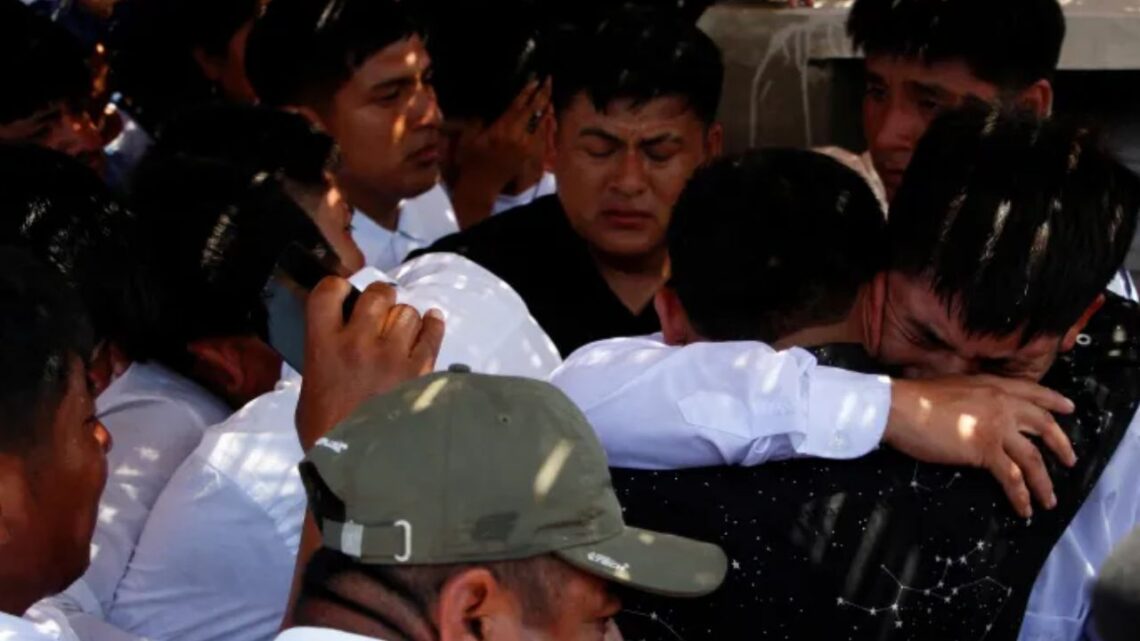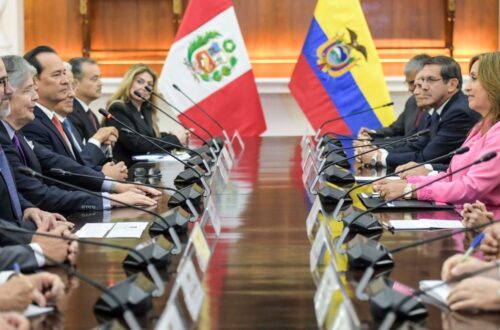Peruvian and Colombian authorities have delivered a major breakthrough in the fight against criminal violence in the gold mining frontier.
Miguel Antonio Rodríguez Díaz, alias “Cuchillo” (Knife), has been arrested in Medellín, Colombia, and is believed to be the main suspect in the kidnapping and murder of 13 miners in early May in Peru’s Pataz region.
This arrest follows intense cooperation between law enforcement agencies and comes amid mounting concerns over the lawlessness engulfing Peru’s mining corridors.
The Massacre That Sparked Shock
In late April, 13 security personnel working for the mining firm La Poderosa, contracted under R&R Security, disappeared while on duty in Pataz, La Libertad region. Their bodies were discovered days later inside a mine tunnel, showing signs of torture and execution.
The killings triggered national outrage and drew attention to rampant illegal mining and organized crime in Peru’s gold-rich north.
The massacre was widely seen as a direct result of struggle-for-control in the illegal gold trade, with criminal gangs using violence to dominate mining sites, extort miners, and eliminate resistance.
Arrest & Charges
The Peruvian Interior Ministry announced that Rodríguez was apprehended during a joint operation by Peruvian police, Colombian National Police, and Interpol.
The Colombian police chief publicized the arrest and noted support from the U.S. Homeland Security Investigations (HSI) in tracking “Cuchillo.”
According to his defense attorney, Rodríguez had spent time in Venezuela before returning to Colombia, where authorities detained him.
He faces serious allegations, including:
- Organized crime
- Aggravated kidnapping
- Aggravated homicide
He is expected to be extradited to Peru to face charges and answer for his alleged role in orchestrating the killings.
Key Facts of the Case
| Aspect | Detail |
|---|---|
| Suspect | Miguel Antonio Rodríguez Díaz (alias “Cuchillo”) |
| Arrest location | Medellín, Colombia |
| Victims | 13 kidnapped and murdered miners/security staff |
| Mining company involved | La Poderosa (contracted R&R Security) |
| Charges | Organized crime, aggravated kidnapping, aggravated homicide |
| Law enforcement coordination | Peru, Colombia, Interpol, U.S. HSI |
| Motive | Control and extortion in illegal gold mining territories |
| Regional impact | Pataz, La Libertad (northern Peru) |
Why This Arrest Matters
1. Deterrence Against Impunity
Cuchillo’s arrest sends a message to criminal networks that leaders will not evade justice. It challenges the culture of impunity in Peru’s gold mining frontiers.
2. Political & Security Pressure
This case has pressured the Peruvian government to respond more decisively, deploying military bases and restricting mining activities in conflict zones to restore order.
3. International Cooperation Success
The arrest underscores how coordinated transnational law enforcement—across Peru, Colombia, and U.S. agencies—can disrupt illicit mining networks that cross borders.
4. Symbolic Closure for Victims’ Families
For relatives, the capture of a suspected mastermind represents a critical step toward accountability and justice.
Challenges Ahead
- Extradition Delays & Legal Hurdles: International legal procedures could slow his return to face trial.
- Proving Command Responsibility: Prosecutors must link Cuchillo not only to direct violence but to the planning and command structure behind the massacre.
- Fragmented Gangs: Criminal groups may splinter or retaliate after his capture.
- Institutional Weakness: Local authorities in remote zones may still lack capacity to enforce law and deter future violence.
- Economic Pressures: Illegal mining remains hugely profitable (reportedly generating USD 3–4 billion annually), incentivizing continued criminal activity.
Wider Repercussions & Policy Responses
In response to the massacre, the Peruvian government temporarily suspended mining operations in Pataz, imposed curfews, and deployed armed forces in the region.
The area has seen decades of conflict between formal and informal miners, but the brutality of this event galvanized national attention.
Critics argue that piecemeal security measures are insufficient; systemic reforms—such as strong mining regulation, anti-extortion laws, and judicial strengthening—are necessary to curb the trend.
The capture of Miguel “Cuchillo” Rodríguez Díaz marks a pivotal moment in Peru’s struggle against violence tied to illegal mining. While his arrest cannot erase the tragedy of the 13 lives lost, it offers hope that the architecture of criminal dominance can be dismantled.
The real test now lies in the judiciary’s ability to secure truth and accountability, and in the state’s capacity to rebuild governance in regions long haunted by extraction, exploitation, and bloodshed.
If managed wisely, this moment could usher in both justice and a new chapter of security in Peru’s mining zones.









